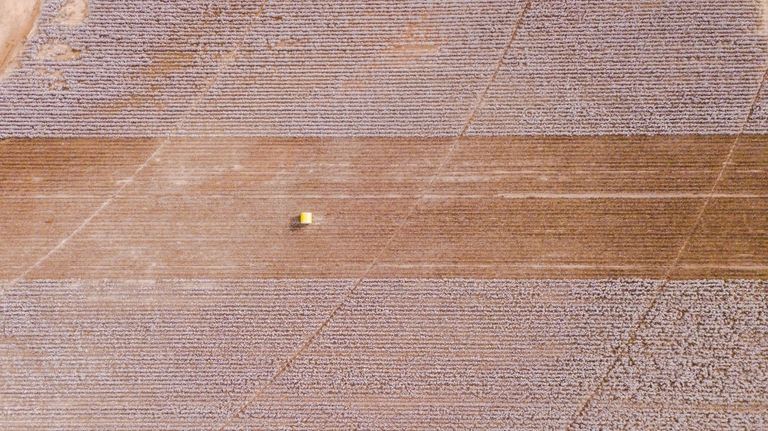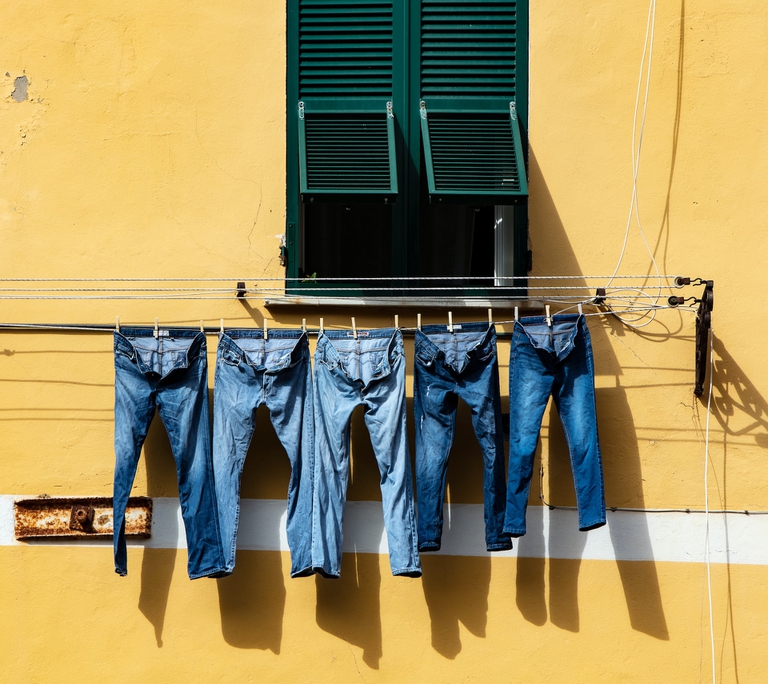https://www.lifegate.it/quanta-acqua-serve-per-produrre-i-nostri-abiti
- |
The water footprint of fabrics and processes is a crucial factor to take into consideration when making responsible purchases from an environmental point of view.
- To produce our clothes, 79 million cubic meters of water are used globally every year.
- The water footprint is not the same for all fabrics and, above all, for each product sector there are choices capable of having a more or less impact on water consumption.
- The difference is mainly made by the production processes and the intentions of the producers.For this reason, to make responsible purchases, it is necessary to know in which situations the most water is wasted.
There is a fact that we all know by heart by now: to manufacture a simple white T-shirt requires 2,700 liters of water.If we think that this is the most common garment in the world, and that around two billion are produced and sold every year, it is easy to calculate what environmental damage the most basic of garments that we all have in our wardrobe is capable of producing.

But how much water does it take, in general, to produce our clothes?The report of Global fashion agenda, in 2017, set this estimate at 79 million cubic meters of water, i.e. a quantity sufficient to fill 32 thousand Olympic swimming pools.Not all fabrics, however, are the same:to make responsible purchases from the point of view of water consumption, it is necessary know the water footprint behind the various processes.
Cotton
The biggest problem related to cotton production it's about his traditional and intensive cultivation:to maximize production, chemical substances and pollutants are largely used starting from the seed, which is treated with pesticides before it is even planted.The use of herbicides and chemicals it's massive:these are often distributed by air, covering vast areas with disastrous consequences on the soil, which becomes impoverished year after year losing fertility.This translates above all into an imperative: consume more water.The drier the soil, the more it will have need to be watered to maintain the same level of productivity.A study of Waterfootprint.org relating to the period 1997-2001 highlights that approximately 84 percent of the water footprint of cotton consumption in the European Union region is outside Europe, with important impacts especially in India And Uzbekistan.In a nutshell:someone else pays the price of the cotton we wear.The highest price in terms of health, because we all pay that in terms of environmental impact.
The organic cotton from this point of view it has amuch smaller water footprint because the use of chemical substances such as pesticides and herbicides is prohibited in its production:being obtained from an older and less productive plant in terms of yield, it weakens the soil less, leaving it richer in mineral salts and therefore more fertile and less in need of water.This aspect is also guaranteed by crop rotation, a technique that promotes biodiversity and the maintenance of the balance of the soil and the life within it.The cotton that deserves these certifications therefore, the Global organic textile standard (Gots) and the Standard organic content (OCS), leads to a lower use of water, but unfortunately represents only the1 percent of world cotton production.

However, the absolute best cotton from the point of view of water footprint is regenerated cotton, that is, the one that shows the acronym on the label GRS (Global Recycle Standard) and which is obtained through amechanical action which frays the fabric scraps and then spins them again. No water because there is no need to grow cotton from scratch, but what has already been produced is spun again.
Jeans
As for the denim, or the fabric of which jeans are made, all the discussions just made regarding cotton, which is, are valid the fiber that makes up this fabric and which is then colored with indigo - the responsible for the classic dark blue color - and then aesthetically defined through long laundry processes.It is estimated that, on average, it takes to produce one pair of jeans between 7 and 10 thousand liters of water.

Excluding the production of cotton, for which the above considerations apply, the most critical phase from a water footprint point of view is therefore the laundry phase.Clearly there are more or less invasive methods to carry out this process and the crucial difference lies above all in the place where denim is produced:in countries like Türkiye, China, India, Bangladesh And Pakistan are still used, in the vast majority of cases, old and inefficient washing machines from the point of view of water consumption.
Brand like Levi's they invested in research and development to use less water in the production of their own jeans, managing to save over a billion liters a year, while there are Italian companies, such as Candiani – based in Ticino National Park – which, for each pair of trousers produced, it uses only 10 liters against the standard 70-150.Regarding denim, therefore, a good indicator to understand what water footprint we are talking about is the place of production.Having said that, 80 percent of the impact of jeans on the environment during their life cycle comes from home washing:to reduce the water footprint of our purchases, therefore, we should generally wash them less - which, in the case of denim, also favors its aesthetic appearance.
Leather
A UNESCO report calculated how much water it takes to produce various leather accessories, taking into account theorigin of the leather, or cows.The water footprint of raising cattle for leather is 17,100 liters of water per kg of leather produced:if a cow produces 6.1 kg of leather, it means that the total consumption of water to produce that quantity of leather will be 104,310 litres (17,100 l x 6.1 kg).With this quantity you get approximately 5 square meters of leather;therefore, if we divide the 104-odd liters necessary by the square meters we obtain thatwater footprint of each square meter of leather produced is 1,897.5 litres.To make a pair of shoes you need 0.3 square meters of leather, while for a pair of boots you need about 6:here, again according to the accounts elaborated in this report, thewater footprint of a pair of leather shoes is 569.25 litres, while that of a pair of boots is of 11.385.

This count, then, does not take into account the leather tanning process, another factor that makes the water footprint indicator of leather production skyrocket.Historically, tanneries were all built near rivers, because Without water it would be impossible to dye leather.In the leather manufacturing process, water has two functions:act as a solvent for the necessary chemicals, and allow the leather not to be scratched or damaged during the tanning process.The preparation process is the most water-intensive of all even if, in the last 25 years, it has been significantly reduced thanks to research in this sector;however, the type of leathers used in fashion may require, for the tanning phase, up to 27 liters per cut.However, this excludes processes such as cleaning and maintenance of the tannery and the fact that this type of industries disperse polluting chemicals fueling the above process.According to the sustainability report of Swartz, the difference in usage can be quite significant:vegetable tanning, in particular, uses a lot of water.
There are plant-based – and non-synthetic – alternatives to leather:fabrics made from cactus, orange scraps, pineapple or mushrooms.Research in this sense has made giant strides and, in terms of quality and durability, these are valid alternatives – and cruelty-free – to actual leather.

